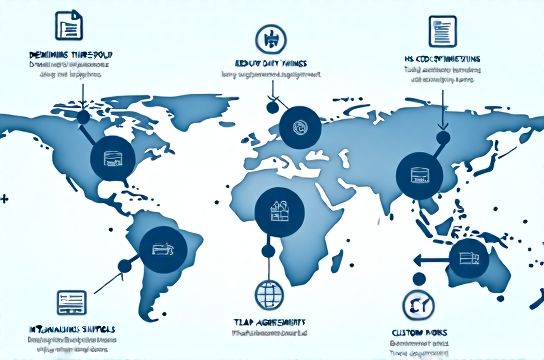Tips to Lower Tax Fees on China International Shipments
- 时间:
- 浏览:40
- 来源:OrientDeck
Shipping goods internationally from China? You're not alone. With e-commerce booming and global supply chains tighter than ever, savvy sellers and importers are looking for smart ways to lower tax fees on China international shipments. But let’s be real — customs, duties, and taxes can feel like a maze designed to confuse. The good news? A few strategic moves can save you hundreds — even thousands — in unnecessary charges.

Know the Rules: It Starts with HS Codes
First things first: classification. Every product shipped across borders falls under a specific Harmonized System (HS) code. These 6-10 digit codes determine your duty rate. Misclassifying your product? That’s a one-way ticket to overpaying or customs delays.
For example, a simple cotton T-shirt (HS 6109.10) might face a 12% duty in the U.S., while a synthetic one (HS 6109.90) could jump to 25%. Small difference in fabric, big difference in cost.
Leverage De Minimis Values
Here’s a golden rule: many countries exempt shipments below a certain value from import taxes. This is called the de minimis threshold. If your package qualifies, it sails through customs duty-free.
Check out this comparison:
| Country | De Minimis Value (USD) | Tax/Duty Treatment |
|---|---|---|
| United States | $800 | Full exemption |
| Canada | $20 | Limited exemption |
| Australia | $1,000 | Duty-free if under threshold |
| UK | £135 (~$170) | VAT may still apply |
Pro tip: Split larger orders into multiple shipments under the de minimis value — but be careful. Some carriers and customs authorities are cracking down on "manifest splitting." Play fair, play smart.
Use Incoterms to Your Advantage
Who pays the taxes? That’s decided by your Incoterms. Choosing the right one puts you in control.
- DDP (Delivered Duty Paid): You (the seller) cover all costs. Great for customer experience, risky if miscalculated.
- DDU / DAP (Delivered At Place): Buyer handles import fees. Shifts responsibility, but may deter customers.
Pick DDP only if you’ve accurately forecasted duties using tools like USITC's HTS database or consult a licensed customs broker.
Free Trade Agreements: Hidden Goldmines
If your goods qualify under a free trade agreement (FTA), you might ship with zero or reduced tariffs. For instance, products made in China with regional value content aren’t eligible — but if components come from FTA partners like ASEAN countries, reassembled in China, you may still benefit.
Always ask your supplier for a Certificate of Origin. Without it, you lose preferential rates.
Customs Duties vs. VAT: Don’t Confuse Them
Many forget: duties and VAT are separate. Even if your item is duty-free, countries like the UK and Germany still charge VAT (20% and 19%, respectively). However, low-value consignments (< £135) may allow sellers to collect VAT upfront via IOSS (Import One-Stop Shop), avoiding surprise fees at delivery.
Final Tips to Slash Costs
- Negotiate with suppliers to declare accurate (but optimal) values — never undervalue; it’s illegal.
- Choose air vs. sea wisely: Air freight speeds up delivery but attracts higher handling fees. Sea freight spreads costs over volume.
- Work with a reliable freight forwarder who understands Chinese export regulations and destination country rules.
In short, lowering tax fees isn’t about hacks — it’s about knowledge, planning, and precision. Master these strategies, and your bottom line will thank you.